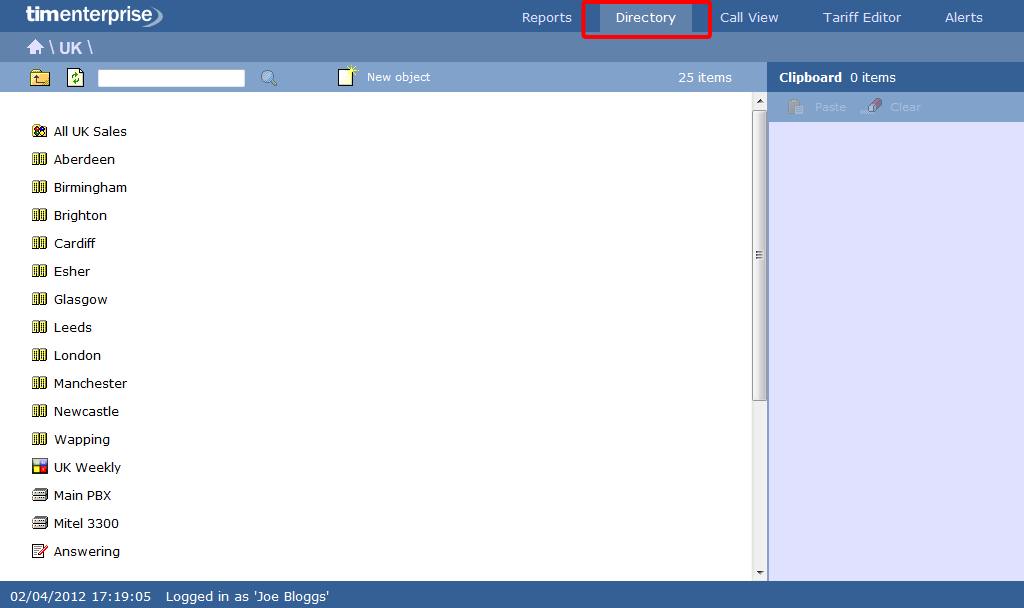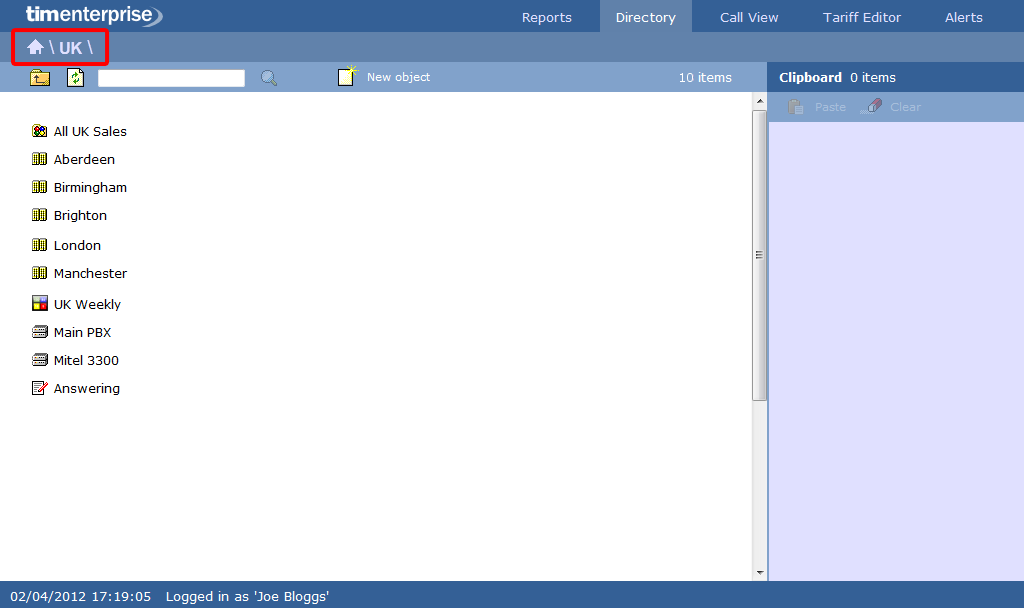Understanding the Directory
Directory overview
TIM Enterprise was designed upon an object-based directory that places no limits on its hierarchical width or depth. This approach permits the integration of multiple sites within one centralised system, where every user can be grouped into folders, sites, cost centres and divisions, allowing you to create an exact replica of your company's internal structure.
The Directory is the central place where every system object is stored, each having an explicit, defined relationship with its peers. This way, an entire tree of related objects can be defined, with no width or depth limits of the branches.
Special virtual groups, known as Reporting Collection, can be added to the Directory, whereby disparate users from anywhere in your organisation can be grouped into one single container for reporting purposes.
To facilitate the configuration and management of large systems, TIM Enterprise also provides directory synchronisation with third-party applications such as Active Directory and Cisco AXL.
Accessing the Directory
To access the Directory, click on the tab from the main menu tab, as shown below:

If you are logged in as a standard web user whose access is restricted to a specific site or group, only the information related to that site or group will be displayed in the Directory. For administrative privileges, contact your system maintainer. |
Adding objects to the Directory
To add an object to the Directory, click on the tab, as shown below:

A new window will appear, displaying the available directory objects grouped in two categories: Organisation units and Other objects.

For a detailed description of each object type, refer to the relevant section.
The example below shows how a top level directory might look like:
